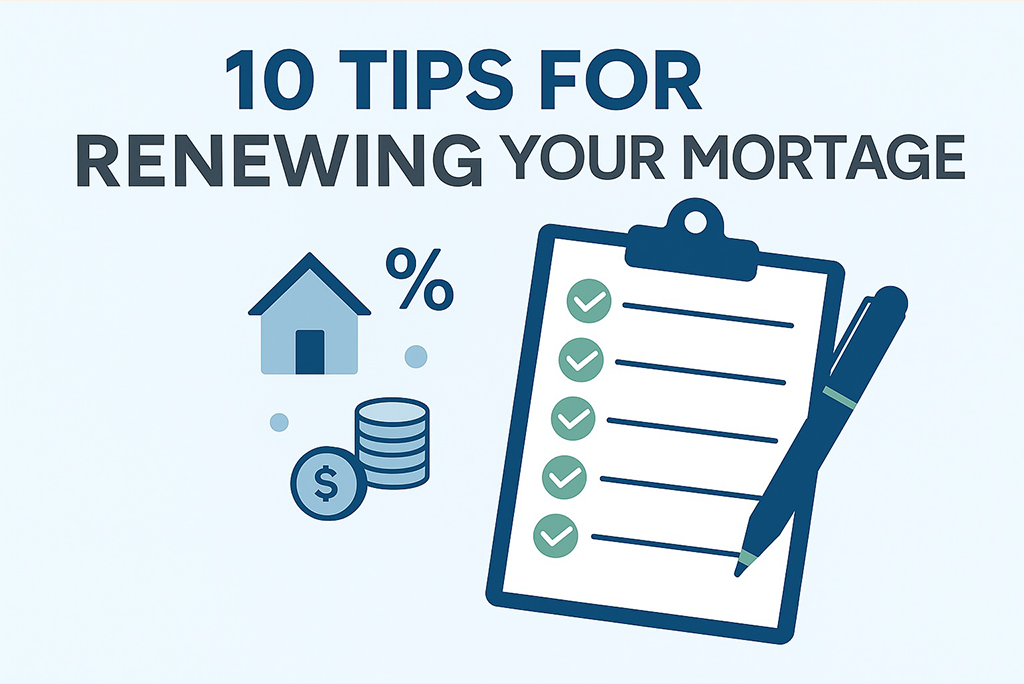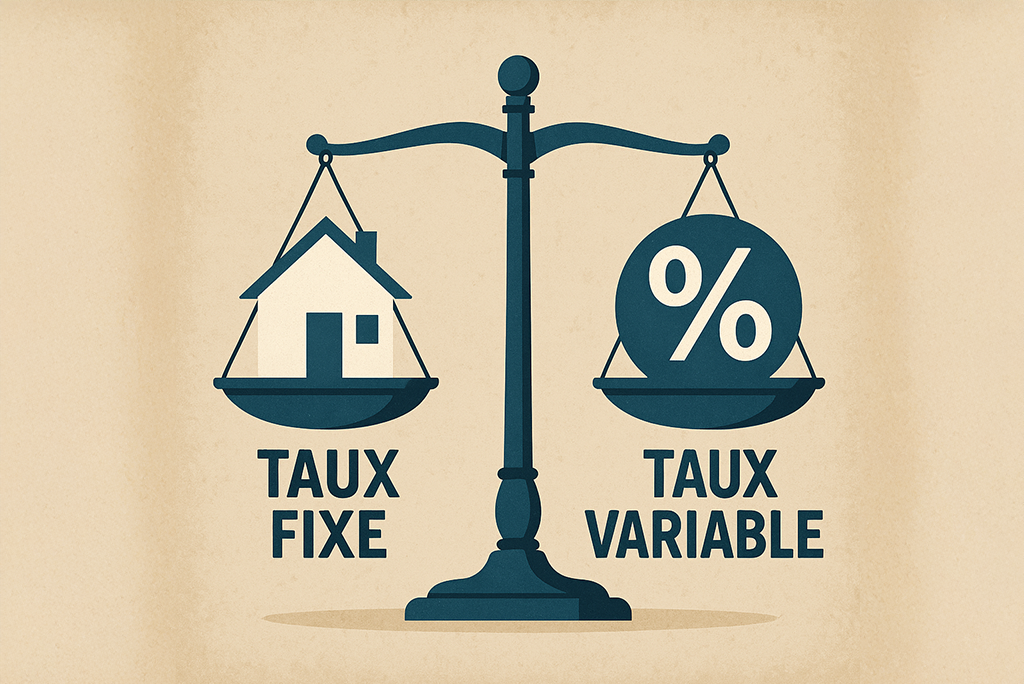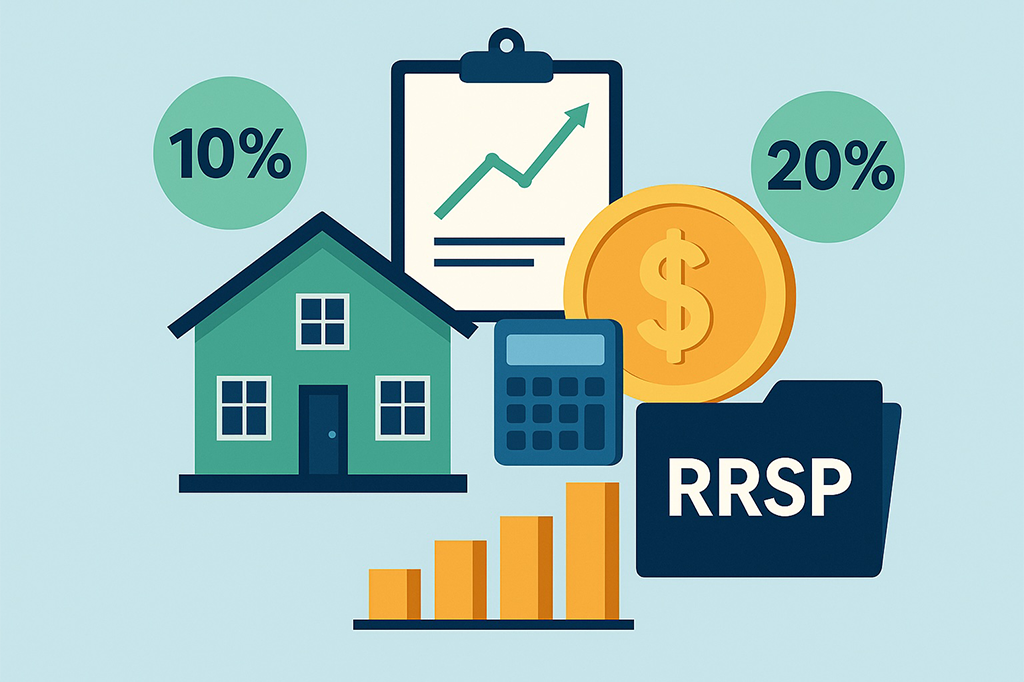Montreal clearly stands apart from Toronto and Vancouver. While those markets have paused, Montreal remains dynamic: sales volumes are rising, median prices are trending up, bidding wars are more measured than at the 2021–2022 peak, and financing conditions have become manageable again.
Backdrop: insufficient housing supply, solid demand, and household confidence. As of August 12, 2025, a 5-year fixed rate around 4.04% lets buyers lock in predictable monthly payments and secure their budgets.
Montreal Moving Against the Tide: Four Market Drivers
Milder past overheating than in Ontario and British Columbia, so the rate reset hit prices less severely.
Still-tight inventory: in many neighborhoods there are more buyers than sellers, which supports values.
Competitive financing again: a 5-year fixed around 4.04% improves budget visibility for households.
Safe-haven asset: real estate remains the cornerstone of household wealth in Quebec, with historically low default rates.
Segment View: Single-Family Homes, Condominiums, and Plexes
Single-Family Homes (detached house)
Trend: roughly +7% year over year and a median around $625,000 (mid-summer reference).
Why: scarce “move-in-ready” homes in the inner suburbs, strong family demand, and interest in comfort/energy efficiency.
What to watch: condition of the envelope and systems (roof, windows, insulation, heating). A thorough home inspection prevents surprises.
Condominiums (condos)
Trend: more moderate growth (about +3% YoY), median around $425,000.
Why: supply is deeper than for houses, but quality varies widely.
Due diligence, in plain English:
Reserve fund: the co-op/HOA’s savings for major future repairs.
Maintenance log / technical studies: evidence the building is professionally managed.
Planned works: façade, balconies, parking, waterproofing, elevator — and the impact on monthly fees.
Plexes (2–5 units)
Trend: around +8% with a median near $815,000.
Why: tight rental market and the search for supplementary income.
How to assess without jargon:
Start with actual rents collected, subtract annual operating costs (taxes, insurance, routine maintenance), then compare with the mortgage payment.
Build a 5–10-year work plan: roof, masonry, plumbing, electrical.
Favor a predictable, documented yield over an ambitious number that is hard to sustain.

Market Activity: What Matters
Transactions: summer 2025 is busy (double-digit YoY growth in July).
Bidding wars: still present but far less systematic than at the pandemic peak.
Inventory: inching up, yet not enough to flip into a buyer’s market.
Operational read: to sell, aim for market-right pricing from day one; to buy, show up ready (budget, pre-approval, paperwork).
Pro-Buyer Rule Changes: What They Change in Practice
1) 30-Year Amortization with Down Payment < 20%
Goal: lower the monthly payment to breathe at the start.
Trade-off: higher total interest over the life of the loan.
Advice: treat the 30-year as an access tool, then schedule prepayments to shorten the true duration.
2) Higher Cap for Insured Mortgages: $1.5M
Effect: mortgage insurance can apply to higher-priced homes without requiring a 20% down payment.
Benefit: expands your search area in higher-ticket neighborhoods.
3) HBP — Home Buyers’ Plan (REER/RRSP)
Up to $60,000 per person ($120,000 for a couple) withdrawn tax-free if the purchase qualifies.
Tactic: time the HBP withdrawal as close as possible to closing to optimize cash flow. Repayment to the RRSP resumes later under the applicable rules.
4) FHSA — First Home Savings Account (CELIAPP)
$8,000 per year, $40,000 lifetime; contributions are deductible and withdrawals are tax-free if used for a qualifying first home.
Power combo: FHSA + HBP maximizes your down payment and can lower the mortgage-insurance premium.
Simple Budget Example at a 5-Year Fixed of 4.04%
Assumptions: fixed annual rate 4.04%, principal $400,000 or $500,000
, amortization 25 years vs 30 years.
$400,000 over 25 years: ≈ $2,120 / month
$400,000 over 30 years: ≈ $1,919 / month
Monthly cash-flow relief: ≈ $200
Total interest over full term:
25 years: ≈ $236,058
30 years: ≈ $290,803
Difference: ≈ $54,745 more with 30 years
$500,000 over 25 years: ≈ $2,650 / month
$500,000 over 30 years: ≈ $2,399 / month
Takeaway: the 30-year can be the boost you need to meet debt-service ratios or preserve a safety cushion month to month. The cost is higher total interest. That’s why a prepayment plan once settled in is smart.
Practical Playbooks by Profile
First-Time Buyer
Three-step plan:
Build the down payment (FHSA + HBP),
Optimize ratios (30-year amortization if needed),
Secure a pre-approval before showings (Book an appointment)
Condos: target well-run HOAs (recent minutes, reserve study, façade/envelope assessments).
Houses: aim for move-in-ready the first year; keep a cash reserve after closing costs.
Investor (plex & rentals)
Plain check: ensure net rents cover mortgage + routine upkeep.
Planned works: roof, masonry, plumbing, electrical, parking — set a realistic CAPEX envelope even if we avoid the jargon.
Rates: a 5-year fixed stabilizes cash flow and reduces short-term surprises.
Seller
Market-right pricing from day one: it shortens time-to-sale and attracts qualified buyers.
Seller file: maintenance invoices, energy upgrades, warranties — everything that reassures monetizes.
Calendar: optimize listing window and showing logistics.
Watch-outs (Explained Simply)
Neighborhood dispersion: two nearby streets can behave differently. Check schools, transit, worksites, services.
Condos: a thin reserve fund can mean a special assessment. Anticipate.
Rates: a fixed rate secures your budget; a variable may start lower but requires risk tolerance.
Repayment capacity: the 30-year is an access tool, not an end in itself. Schedule prepayments to limit total cost.
Bottom Line
Montreal shows notable resilience: rising transactions, prices trending up across all three segments (houses, condos, plexes), and contained bidding wars. The new environment (30-year amortization, higher insured-mortgage cap, HBPand FHSA) gives first-time buyers breathing room, while sellers and investors benefit from strong underlying demand.
The keys: advance financial prep, granular neighborhood reading, and disciplined execution (inspection, documentation, financing, timing).








